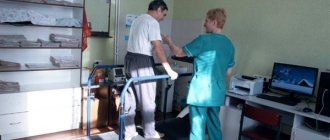No one is immune from heart problems, and pathology is not excluded at any age. According to cardiologists, heart attacks are increasingly being diagnosed in young people. And approximately 15-20% of sudden deaths are caused by this pathology. Since myocardial anomalies require compliance with certain recommendations, the introduction of restrictions, and the recovery process is quite long, the question of assigning a special status arises. We suggest you find out from the article whether this is realistic and on what grounds.
Is it possible to get disability after a heart attack in 2021?
As experts note, a heart attack in a simpler sense is called damage to the heart muscles with necrosis of organ tissue, all in a severe form. There are small-focal and extensive (large-focal) infarcts. The problem is also divided by area of localization.
Necrosis of the muscle tissue of the heart can be stopped and the organ restored, but treatment will take a lot of time and will require following medical instructions. Surgery cannot be ruled out. For example, if necessary, surgeons perform bypass surgery or install a stent.
Sick leave is usually issued for 4 months (minimum), since the patient is not able to immediately return to her previous life and work. If there is no visible improvement, and the sheet cannot be extended, the doctor refers the “core” patient to MSE.
What is a stent, types
The lumen of the cardiac artery is restored with a stent using a thin metal prosthesis made in the form of a mesh tube. It presses the plaque into the walls of blood vessels and pushes them apart, acting as a frame. The device prevents the artery from narrowing again.
Characteristics of modern stents:
- Made from an alloy of metals (cobalt and chromium). The material does not cause a rejection reaction from the body and ensures the strength of the product.
- They have the shape of a tube 10 mm long, 0.25-0.6 cm in diameter.
- The walls of the stent are mesh. This allows you to change the diameter of the device. The smallest one is used to introduce the product to the site of an atherosclerotic plaque, and the larger one allows you to expand the narrowed area.
- The walls of the stent are coated with a special compound. It prevents blood from clotting on the device. The substance gradually comes out, which prevents the formation of blood clots on the device itself.
Group assignment principle
The law allows a citizen with the impairment in question to qualify for the group. The rules for establishing status are set out in Government Decree No. 95 of February 20, 2006.
In general, the expert commission takes into account the following parameters during the examination:
- degree of need for outside help;
— preservation of self-service skills, communication, etc.;
- general well-being and how quickly recovery occurs;
- Is the person able to continue working, are there any restrictions preventing this.
Disability after a heart attack is relevant if:
— recovery lasts more than 4 months;
- surgery was performed;
- more than 50% of abilities are lost due to pathology;
- the patient does not work and receives an old-age pension;
— against the background of successful rehabilitation, there is angina pectoris, heart failure, etc.
It should be understood that a heart attack is a serious illness and in the absence of timely assistance, the likelihood of becoming disabled increases:
| Group | Degree of loss of abilities | Characteristics |
| First (I) | 80-95% |
In this case, disability may be assigned temporarily for a period of no more than 3 years. |
| Second (II) | 60-80% |
With this degree of damage to the heart muscle, there is a risk of relapse. |
| Third (III) | 40-60% |
With these symptoms, the patient is not subject to full rehabilitation. |
Only experts from the ITU Bureau have the right to establish a special status.
Risk factors
They are divided into two groups:
- Modifiable (they can be changed or reduced impact): smoking, arterial hypertension, physical inactivity, high cholesterol, consumption of foods high in animal fats and high calorie content, diabetes mellitus, stress, excess weight, menopause and postmenopause, increased homocysteine.
- Unchangeable: age, genetic predisposition, gender.
Etiological factors are also identified:
- Atherosclerosis of the coronary arteries and the appearance of blood clots in them.
- Non-atherosclerotic lesions of the coronary vessels. It occurs when the walls of the arteries become inflamed due to vascular injuries, congenital anomalies, blood clotting disorders, and vasospasm. As a result, blood flow decreases.
What determines the length of a patient’s stay in the group?
Since the disease in question is serious, there is a chance of receiving temporary disability. And some beneficiaries can generally recover during the time for which the group is given (a year or two). Then the status is removed.
Be that as it may, in case of myocardial infarction, the rules apply regarding the period of relevance of a particular group:
| Group | Term | What happens after the certificate has lost its validity? |
| Third | 1 year |
|
| Second | 1 year |
|
| First | 2 years | For patients with severe pathologies who have no chance of recovery, an indefinite status is established. |
Important
! Even after recognizing the fact of recovery, it is recommended to adhere to a diet and live without heavy physical activity.
Clinical case
Patient G., 55 years old, was admitted to the emergency department with complaints of intense, burning pain in the chest, which radiated to the lower jaw and left arm, as well as fear of death.
Taking nitroglycerin did not reduce the discomfort. History: angina pectoris, diagnosed 5 years ago, prescribed therapy was taken irregularly. Objectively: pale skin, hyperhidrosis, heart rate 100 beats/min, severe shortness of breath at rest, cyanosis of the nasolabial triangle, third and fourth heart sounds appeared, blood pressure 160/100 mm Hg. Preliminary diagnosis: “Myocardial infarction.” The diagnosis was confirmed using: dynamic ECG, blood test for markers of infarction (troponins T and I, CK, CF-CK), clinical and biochemical blood tests, Echo-CG. The patient received: “Actelise”, “Aspirin-cardio”, “Heparin”, “Morphine”, GIK, “Bisoprolol”, “Erinit”, “Preductal”, “Quercetin”.
After treatment and a four-month course of rehabilitation, the patient still had swelling in his legs, shortness of breath at rest, and attacks of angina, so he was referred to MSEC. After the examination procedure, he was assigned disability group II for a period of 1 year.
How is disability assigned to pensioners who have had a heart attack?
Citizens of retirement age are considered to be at risk for this disease. Moreover, in approximately half of the cases, heart attack and ischemia end in death for them.
If a pensioner has partially overcome his illness, but does not work and needs social and financial support, he is given a group without significant differences compared to other beneficiaries.
True, there is an important feature here: pensioners can be given status for an indefinite period after the first medical examination (that is, they do not need to undergo a second medical examination).
Preferences and benefits for disabled people with heart attacks
The legislation does not provide for special benefits for core workers. They are recipients of the same preferences as other disabled people, that is, they have the right to claim:
— discounts when paying for CG;
— pension and other accruals;
— free medications, glucometer and test strips;
— rehabilitation in a sanatorium and health checks in a hospital (free of charge).
Plus, according to the Labor Code, the beneficiary can continue to work in easier conditions (if health allows, there is no prohibition from doctors).
Recovery process
People who have suffered such an illness need to pay special attention to the recovery process. After all, your condition and health in the future will depend on it. The process itself depends on the severity of the attack (degree of disability). But there are general recommendations that are aimed at improving health:
- physiotherapy procedures (massage, breathing techniques);
- exercise therapy;
- appropriate diet (control the amount of fluid consumed, exclude fried, spicy and heavy foods, give preference to steamed dishes, avoid salt).
Walking in the fresh air, moderate physical activity under the supervision of specialists, swimming - all this has a beneficial effect on the patient’s physical condition. You just need to follow the doctors’ recommendations, don’t overdo it in your classes, and monitor your pulse and breathing. Avoid stressful situations.
The procedure for registering disability
Disability after a heart attack can begin to be registered after receiving a referral for medical examination from a cardiologist at the clinic where the patient is served. Contacting a private specialist will be regarded only as a recommendation.
Required documents
Before the examination, in addition to the application for the procedure and directions, you need to prepare:
— applicant’s passport;
— extracts from the medical record;
— SNILS and medical policy;
- paper on marital status;
— data from tests, diagnostics, etc.;
— certificate and characteristics from the place of work;
- other documents indicating social status, etc. (if needed).
Where to go
Before the medical examination for the “core” group, the patient undergoes the necessary tests, visits specialists and receives opinions on his condition. This information is an important addition to obtaining a group. Then, with a package of documents, the future beneficiary should contact the ITU office at their place of residence.
Myocardial infarction - contraindications for work
After myocardial infarction, patients have contraindications for the following types of work:
- professions associated with danger to humans (dispatchers at power plants, railways and airports, drivers of any categories of vehicles);
- professions related to air travel (pilots, flight attendants, etc.)
- professions associated with constant movement (couriers, salespeople);
- professions related to work in the field (builders, geologists);
- professions related to the maintenance of electrical equipment;
- professions that require the performance of labor duties on night shifts or daily duty;
- professions that require performing work duties at height (crane operators);
- professions that require a high pace of work (on a conveyor belt, on machines);
- professions related to work in unfavorable meteorological and climatic conditions;
- professions related to working with toxic neurotropic substances (for example, tobacco production, working with benzene, etc.).
If before a myocardial infarction a person worked in any of the above conditions, after suffering from the disease he will receive a non-working disability group with the inability to perform his work duties.
Why are people denied disability after a heart attack?
The presence of heart lesions does not guarantee receipt of a certificate of special status. ITU members may refuse an applicant when:
— rehabilitation after a heart attack is considered successful;
— the condition does not meet the criteria even for the mild (3) group.
If you disagree with the refusal, you can contact a higher bureau for a new examination. The final authority for appeal is the court - here, in addition to a re-evaluation of health, it is permissible to involve an independent expert.
Important
! If a fact of simulation or provision of knowingly false information or forged documents is detected, ITU specialists have the right to report a violation of the law to the relevant authorities.
Rehabilitation
After stenting and complete recovery, doctors strongly recommend undergoing cardiac rehabilitation, which includes:
- A program of physical exercises that improve myocardial contractile function and have a beneficial effect on the entire cardiovascular system.
- Healthy lifestyle training.
- Psychological support.
Physical exercise
Rehabilitation after stenting necessarily includes regular physical activity. Research has shown that people who exercise regularly and make other healthy lifestyle changes after a heart attack live longer and have a higher quality of life. Without regular exercise, the body slowly decreases its strength and ability to function normally.
Physical activity can be considered any activity that causes the body to burn calories. If a person makes his activity consistent and constant, it becomes a regular program.
This program should combine heart-healthy exercises (aerobic exercise), such as walking, jogging, swimming or cycling, as well as strength and stretching exercises that improve the body's endurance and flexibility.
It is best when a physical exercise program is drawn up by a physical therapy doctor or rehabilitation specialist.
Lifestyle change
Lifestyle changes after stenting are one of the most important measures to improve the prognosis of patients. It includes:
- A healthy diet helps the heart recover, reduces the risk of complications and reduces the possibility of re-formation of atherosclerotic plaques in the vessels. The diet should contain a large amount of fruits and vegetables, whole grains, fish, vegetable oils, lean meat, and low-fat dairy products. It is necessary to limit the consumption of salt and sugar, saturated and trans fats, and avoid the abuse of alcoholic beverages.
- Stop smoking. Smoking significantly increases the risk of developing coronary heart disease by depriving it of oxygen-rich blood and increasing other risk factors, including high blood pressure, cholesterol levels and physical inactivity.
- Weight management – may help lower blood pressure and improve cholesterol and blood glucose levels.
- Controlling diabetes mellitus is a very important health measure for patients with this disease. Diabetes is best controlled through diet, weight loss, physical activity, medications, and regular monitoring of blood glucose levels.
- Blood pressure control. You can normalize your blood pressure through weight loss, a low-salt diet, regular exercise, and antihypertensive medications. It helps prevent heart attack, stroke, kidney disease and heart failure.
- Blood cholesterol control.
Psychological support
The experience of stenting, as well as the disease that caused it, exposes the patient to stress. In everyday life, any person constantly faces stressful situations. Close people can help him cope with these problems - friends and relatives, who should provide psychological support. You can contact a psychologist who can professionally help a person cope with stressful events in life.
In what cases is it necessary to undergo re-examination?
After the expiration of the benefit certificate, the “core” patient must undergo a medical examination and confirm his status. The examination is annual for holders of groups 2 and 3, or occurs every few years (for group 3). Beneficiaries with permanent disabilities are exempt from this need, but can be sent back for examination if their condition worsens.
Thus, it is possible to become a beneficiary and recipient of state support in the form of preferences after a heart attack. However, you need to take into account the uniqueness of each individual case and follow the regulated rules.
Literature
- Order of the Ministry of Health and Social Development of the Russian Federation (Ministry of Health and Social Development of Russia) dated December 23, 2009 N 1013n Moscow “On approval of classifications and criteria used in the implementation of medical and social examination of citizens by federal state institutions of medical and social examination.”
- Decree of the Government of the Russian Federation of March 29, 2018 No. 339 on amendments to the Rules for recognizing a person as disabled.
- Afonkin A.N. Examination of temporary disability and medical and social examination. 2002











